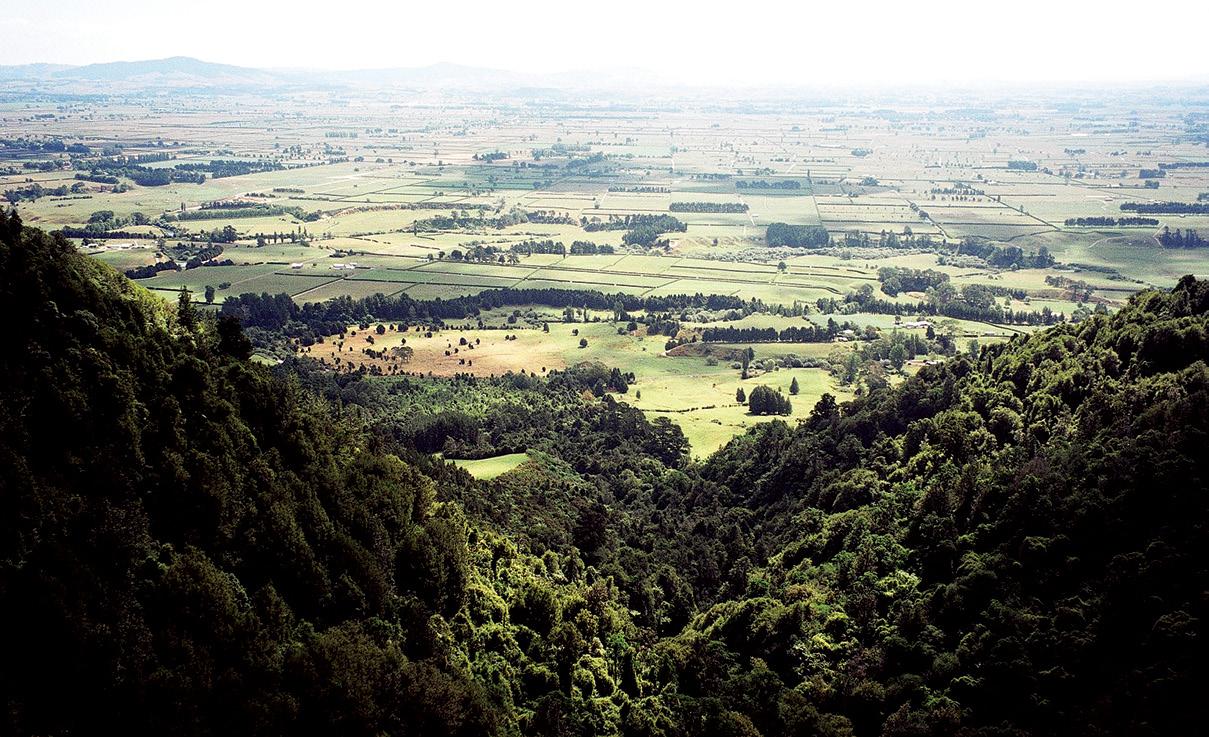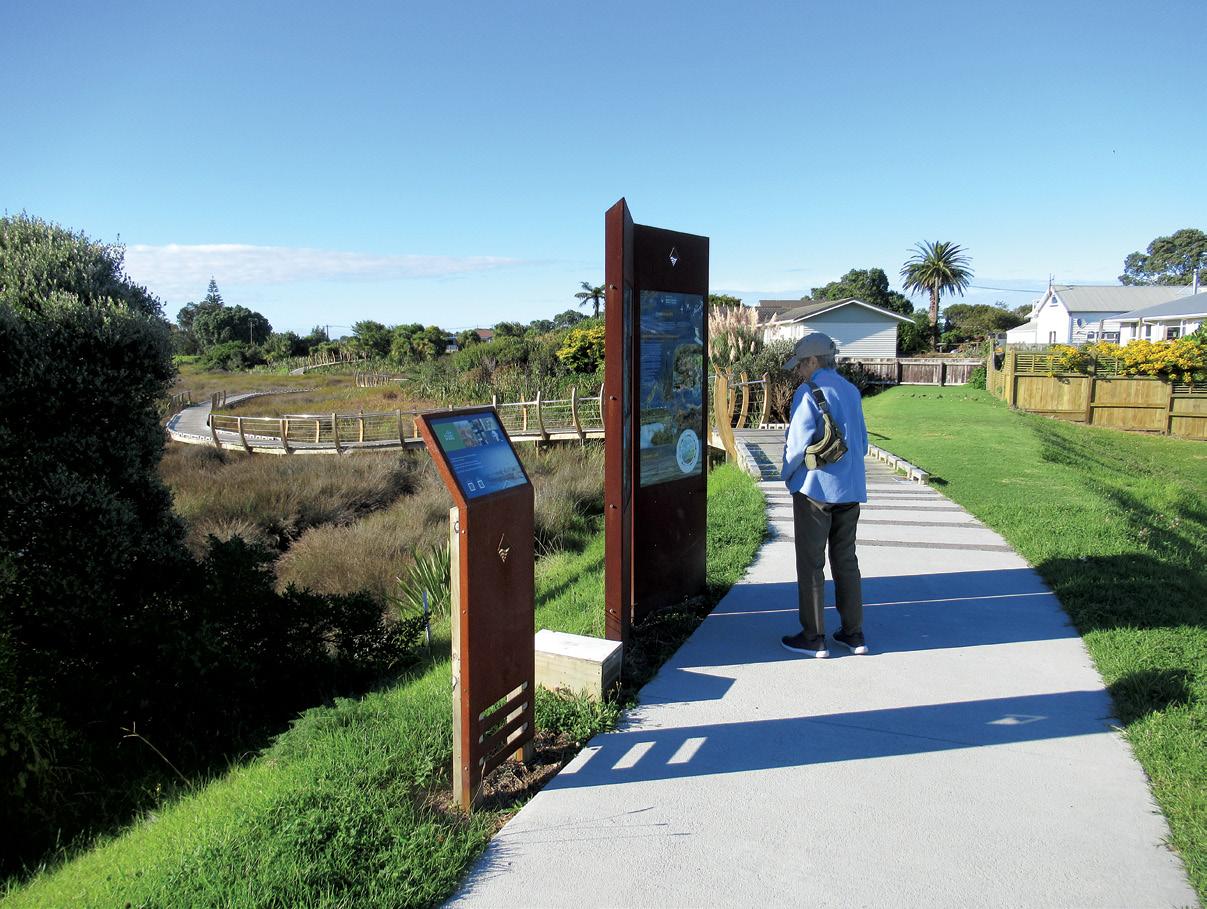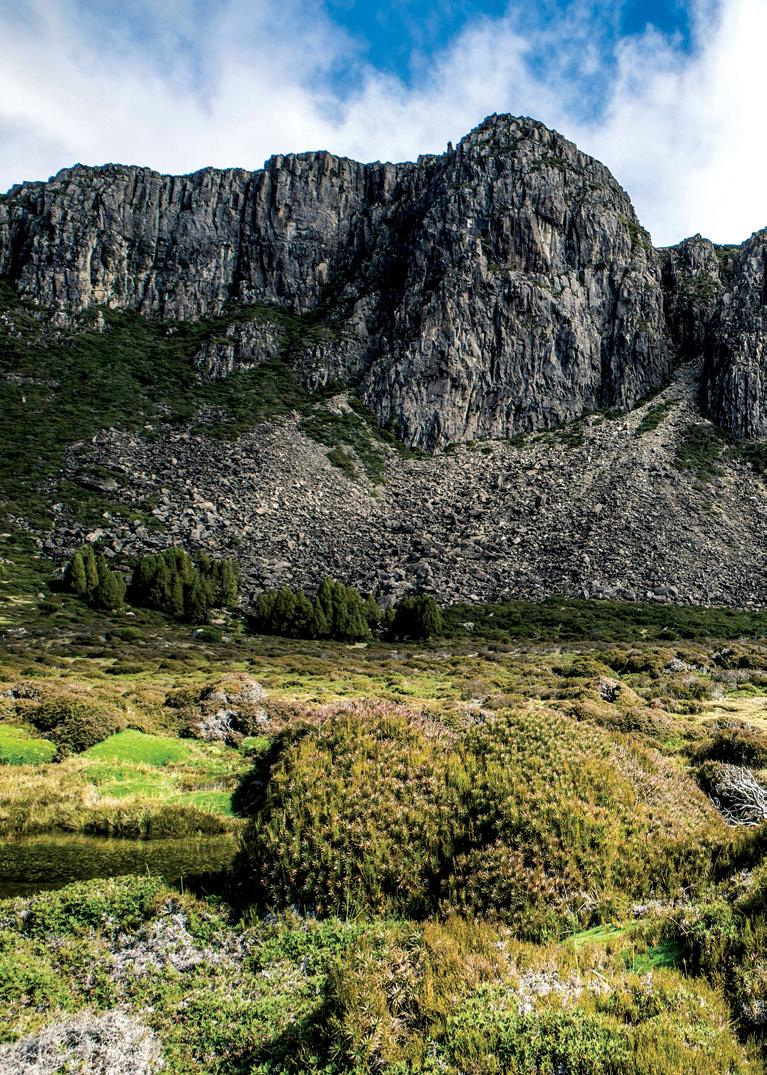
6 minute read
New Zealand Walk: Ghosts of the past: Historic
Ghosts of the Past: Historic trails across the Kaimai-Mamaku Park
By Phillip Donnell
Advertisement
The Kaimāī Mamaku Conservation Park covers an area of approximately 37,000ha and features over 350 km of walking and tramping tracks. Kaimai means “to eat mussels.”
Ancient Maori knew that once they crossed this range towards the coast, seafood would probably be on the menu!
The net result was a series of three east-west trails that traverse the range (Te Tuhi, Wairere and Tuahu), later joined by a pakeha-instigated addition (Thompsons). Each can be completed in either direction in five to six hours. These crossings have considerable historical significance. Many famous feet have preceded you.
The Te Tuhi Track is an old Maori route across the range. According to Maori tradition, it was named after Te Tuhi (1823-1910), a prominent Maori chief of the Ngati Mahuta tribe of Waikato, a supporter of the Maori King movement in the 1850s.
The track was probably developed after the defeat of the Kingite forces in the Waikato in 1864, as a short cut between the Piriakau at Whakamarama and their Ngati Haua friends and family at Okauia. The track was used more often in the late 19th century when hostilities between inland and coastal tribes, and the Hauhau uprisings, made travelling the Wairere Track more hazardous.
After the establishment of a sawmill at Whakamarama by the Sharplin family in 1912, the Te Tuhi Track was used frequently by the Okauia people who were working at the mill. Many employees came to work via the Track.
Sawn timber was shipped from Omokoroa to Auckland. It was while carrying timber from here that the scow Moa was captured by the escaped German prisoner of war, Count von Luckner, during World War I.
The mill closed in 1931, but Leyland and O’Brien took it over in 1933, continuing operations until 1946. In 1942, during the Second World War, the Army . held jungle training exercises along the Te Tuhi Track. Trenches and fox holes made then, should not be mistaken for Maori fortifications. The area was re-logged by Ngahere Sawmills of Greerton from 1962, ceasing in 1975, when it became part of the park.
The Wairere Track was a traditional route for Maori, linking Matamata with the Bay of Plenty. It was used occasionally by war parties and extensively for trading (mainly flax and pigs) between the tribes on each side of the range, and later with European traders at Tauranga.
Above: Wairere Stream - Mini falls before the Wairere Falls.


Above: Tuahu Kauri.
Te Waharoa, Potaua Tangitu and Te Mete Raukawa are some notable earlier users.
Missionaries, including Alfred Brown, William Williams and Thomas Chapman, and explorers and scientists such as Ferdinand Hochstetter (geologist), John Bidwill and William Colenso (botanists), also used the track. Lady Martin was carried on a litter and Celia Brown rode her pony over from Tauranga.
Wairere Falls lies at the spectacular western entrance to this trail. The Falls drop 153 metres over the Okauia Fault in two stages and are most majestic after heavy rain. From the top there are magnificent views over the Waikato and Hauraki Plains.
It was here that 12-year-old Tarore was murdered in 1836. The copy of St Luke’s gospel stolen from her had a profound influence on those who read it, assisting Christianity to spread as far south as Kapiti.
The legend of Ngahue says that he came to New Zealand on the back of a fish and walked over the Wairere Track from the other side. After travelling overland he brought back some greenstone and killed a moa at the foot of the falls before going back to his home in Rarotonga.
Thompson’s Track is an old formed county road which was once the main thoroughfare linking the Katikati area with the Waikato. It was developed as a road access across the ranges in 1885, to take local stock over the Kaimai Range to coastal sale yards before the Waihou sale yards were developed.
It is thought to have been named after Te Waharoa’s son, William Thompson (Wiremu Tamihana) the kingmaker and Christian chief of the Ngati Haua.
The road fell into disuse after the Kaimai Highway and Athenree Gorge roads were upgraded. According to stories, the track was upgraded to a reasonable road standard during the Second World War as an alternative escape route should Tauranga be invaded. The Manawaru Home Guard dug trenches at the top, ready to fight the Japanese had they invaded.
In later years it was used as a stock route and by local contractors to walk their bulldozers to Katikati to carry out land clearing work.
While Thompsons has been used by motorbikes for many decades, it has only been used by 4WD vehicles since they became popular in the 1980s and 90s, having a major impact on its condition. Today it is a muddy, unmetalled 13km eyesore, with frequent ruts, slips and washouts.
On a weekend it is not unusual to see a dozen or more 4WDs and motor bikes on the track at any one time. The track is also used by trampers, mountain bikers, hunters and horse riders.
The Tuahu Track (11.9km,5hour) is the northernmost traverse of the range. Like the Wairere and Te Tuhi Tracks, it has a long history, being used by Maori, missionaries and miners before being converted to a bridle and bullock track (linking Katikati and Te Aroha) in the 1890s. The area around it was seriously logged from the late 1800s through to about 1970, and the often rugged terrain meant a combination of extraction methods, including tramways.
These historic access ways are now being used as tramping tracks. In 2007 the track was permanently closed to logging.
Beginning from the car park at the end of Hot Springs Road, a graded track winds through attractive native forest dotted with young kauri and rimu trees. After roughly 20 minutes, a side track leads to a platform surrounding one of the biggest kauri trees in the Bay of Plenty that somehow escaped the logger’s axe. Beyond this point, the track becomes more difficult, with some narrowing
Above: Wairere Falls.
FOOTSTEPS
OFFERING THE BEST DAY WALKS IN 20 REGIONS OF NEW ZEALAND!
Each region has a week-long package (for 6-10 people), including transport and accommodation.
We welcome your enquiry: footstepsanz@gmail.com or phone 021 172 3244

Historic trails across the Kaimai-Mamaku Park

Ouch! Sore feet while walking?
Hikers Wool is 100% New Zealand wool. Cushion your feet to prevent pain, rubbing and blisters.
Buy online or at selected stockists
For more info visit www.hikerswool.co.nz

Above: Waikato farmland from top of Wairere Falls. Below left: The Brink, Wairere Falls.
as you continue up to the crest.
It is said that this country lacks a sense of history. These walks will cultivate yours. You cannot help but reflect on the many who have trod these paths before and be inspired by their courage, skill, prowess and achievements.
Footsteps Walking Club of Aotearoa New Zealand includes Wairere in its Waikato itinerary for next summer, just one of 20 regions where they offer the very best day-walks available. They welcome your enquiry: 021 172 3244, 07 544 9509, footstepsanz@ gmail.com.
Fact file
How to get there: Ten minutes drive from Matamata , Wairere Falls Track is on Goodwin Road off Te Aroha-Okauia road, south of Te Aroha.
Length of walk 5km
Time: Four to five hours
Track: Easy and an advanced tramping track.










